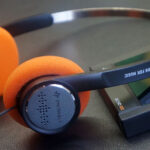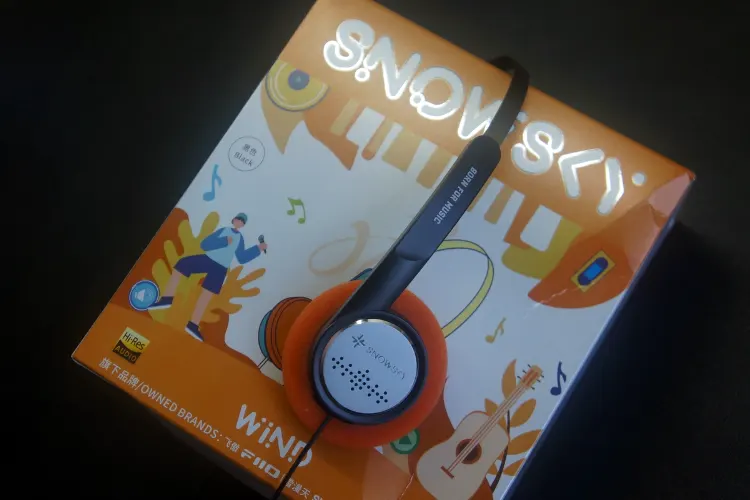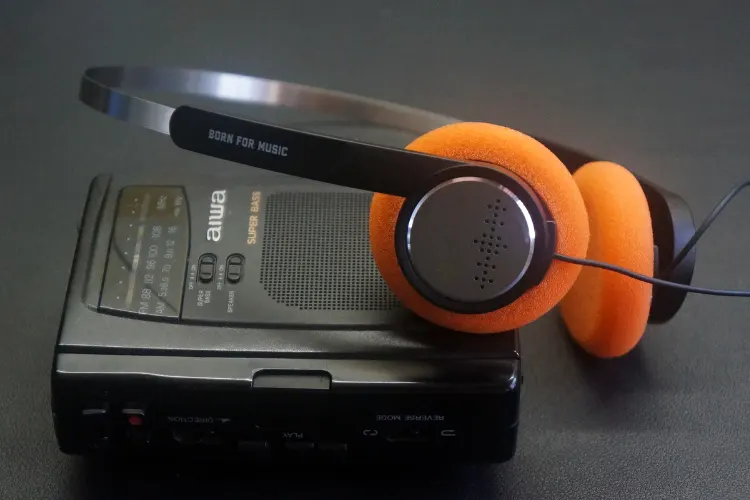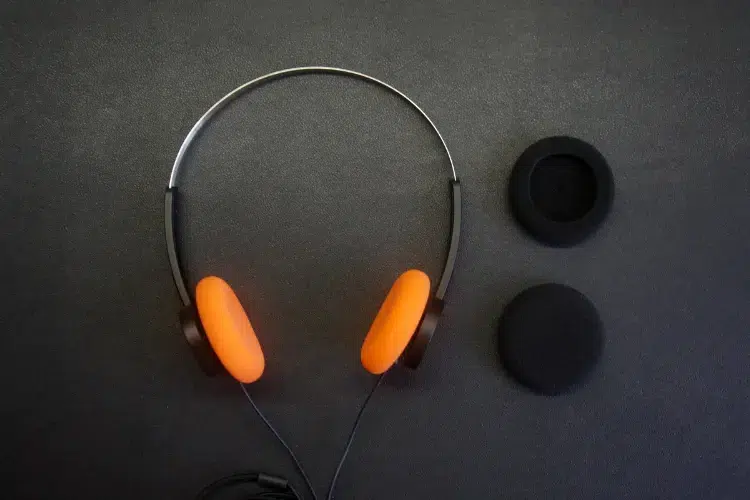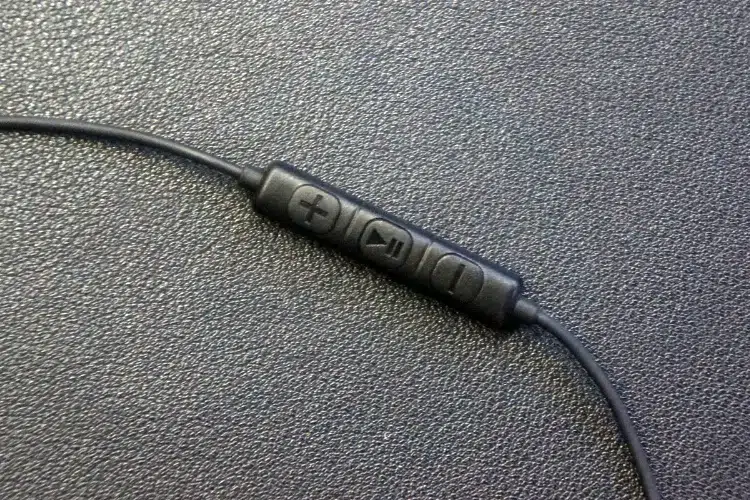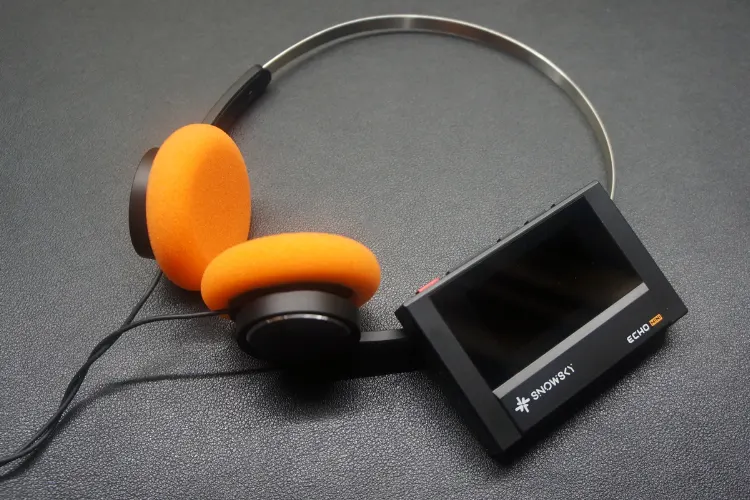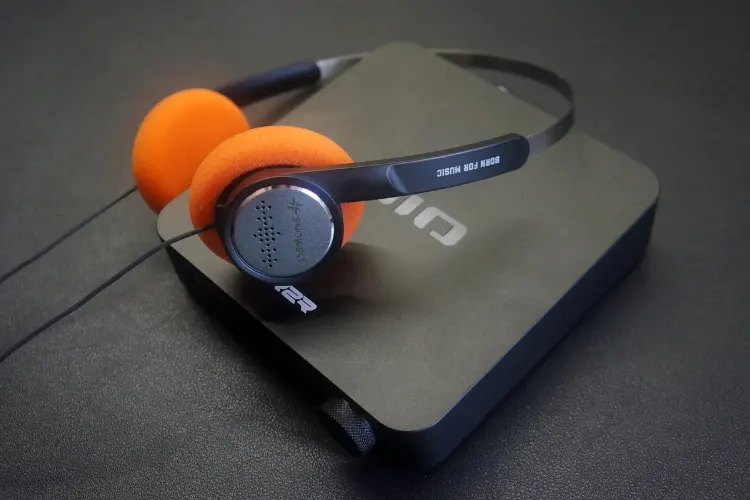Today, Meldrick reviews the FiiO SNOWSKY Wind, an entry-level set of on-ear 40mm dynamic driver headphones with a retro-inspired design. They are currently priced at $19.99.
Disclaimer: I received this sample in exchange for my honest opinion. Headfonics is an independent website with no affiliate links or services. I thank FiiO and SNOWSKY for their support.
You can click here to learn more about the FiiO SNOWSKY audio products previously reviewed on Headfonics.
This post follows our current scoring guidelines, which you can read in more detail here.
FiiO’s sub-brand SNOWSKY enters the ultra-budget headphone scene with the Wind, a retro-styled, on-ear, semi-open set priced at $19.99.
Known for their high-performing DACs, amps, and IEMs, FiiO is no stranger to delivering value in the audio space, however, SNOWSKY marks a more style-forward, entry-level direction.
With the Wind’s throwback aesthetic, featherweight build, and smartphone-friendly features, it’s clear this release is aimed at casual listeners and nostalgia seekers alike, and is a likely pairing with their recently released ECHO MINI and RETRO NANO units.
However, does it deliver more than just nostalgic looks? Read on for my full impressions and comparisons to industry standards such as the Koss Porta Pro and KPH30i.
Features
At the core of the FiiO SNOWSKY Wind are 40mm dynamic drivers utilizing Japanese-imported PET composite diaphragms. This design promises a responsive and dynamic audio performance, delivering a sound signature that resonates with both clarity and depth.
The integration of copper-clad aluminum Wire (CCAW) voice coils alongside powerful N52 neodymium magnets ensures efficient driver performance. This combination enhances the headphones’ ability to deliver detailed sound reproduction
Tipping the scales at roughly 50 grams, this headphone practically disappears on your head after a few minutes of wear. This light build contributes to long-wearing comfort and enhances the throwback vibe.
Design
The FiiO SNOWSKY Wind headphones come in silver, pink, and black. My sample is the black version of the SNOWSKY Wind, which pairs strikingly well with the included orange foam pads. The color contrast gives the headphones a strong visual identity that stands out without trying too hard.
It’s hard to ignore how closely the Wind resembles classic portable headphones from the ‘70s and ‘80s Walkman era.
This is a look that’s resurfaced lately thanks to popular superhero movies and retro-themed series. It’s a clean, familiar aesthetic that taps into nostalgia while still feeling relevant.
That retro look comes with a no-frills construction. A single thin steel band runs across the top and terminates on both sides with plastic arms. Each arm is printed with a “Born for Music” logo, which helps break up the plainness and reinforces SNOWSKY’s branding.
The arms lead into circular yokes that hold the driver housings. These yokes are printed with the SNOWSKY logo and feature evenly spaced vent holes underneath, subtly referencing the headphones’ semi-open design.
Being a compact on-ear design, the cups snap into the yokes with good articulation and rotate enough to provide a comfortable fit.
Overall, the Wind doesn’t try to hide its simplicity, but it leans into it well. The black and orange colorway gives it a playful, eye-catching edge, and in terms of design, this is one of the more stylish budget headphones I’ve handled in a while.
Comfort & Isolation
Because of its barebones and utilitarian construction, the FiiO SNOWSKY Wind is exceptionally light, coming in at just around 50g. In practice, this makes it one of the most comfortable headphones I’ve used for portable, everyday listening.
The headband is so light I barely feel it resting on my head, and it applies just enough clamp to keep the headphones stable without causing pressure or discomfort.
The earpads are thin and breathable. Unlike plush over-ears that try to mimic pillows pressed against your cheeks, the Wind keeps it simple; it feels like a soft layer of foam resting on your ears.
This minimalist approach works surprisingly well. Despite the lack of padding, the Wind never felt loose or insecure, even during light movement and mixed use at my desk and outdoors.
However, comfort comes with a tradeoff. Being a semi-open design, the Wind offers almost no passive isolation. It blocks a small amount of background noise, mainly due to your music playing into your ears rather than any physical barrier.
Conversations, engine hums, and ambient sound easily make their way in. It’s usable in quieter environments, but those needing real noise isolation will need to look elsewhere.
Stock Cable
The Wind’s fixed cable might raise some eyebrows in 2025, especially with how common modular and balanced terminations have become, even at budget levels.
It’s a bit unexpected coming from FiiO, a brand known for modularity and upgrade paths, but given the Wind’s ultra-affordable price point, the decision makes sense.
The cable itself is lightweight and fabric-sleeved. It includes an inline remote and microphone, both following the CTIA standard, making it fully compatible with most smartphones and laptops.
The remote has a tactile, satisfying click, and all controls worked flawlessly during testing on both Windows and macOS devices.
Microphonics are minimal, and the cable has a bit of flexibility to it, preventing kinks. However, it does tend to tangle easily when stuffed into a pocket or bag, which can be a minor annoyance for daily users.
Mic quality is about what you’d expect at this price, surprisingly decent in a quiet room, and enough for quick calls or online meetings. It won’t filter out background or wind noise very well, but it gets the job done when conditions are favorable.
Packaging & Accessories
The FiiO SNOWSKY Wind comes in a compact, glossy cardboard box that features stylized artwork of the headphones up front.
The back carries over the same visual theme, pairing additional graphics with key specs to give a quick rundown of the product before opening. It’s a simple but well-designed package that gives the product a bit of visual flair right out of the gate.
Inside the box, you’ll find a spare set of black foam pads, the headphones themselves, and some basic documentation.
The inclusion of the extra foam set is appreciated. Aside from aesthetic variation, it means that buyers won’t need to purchase another set of pads when their first set gets worn out.
I would have appreciated the inclusion of a carry pouch or case, but at this price range, its inclusions are more than sufficient.
Sound Impressions
Bass
As expected from a bright-leaning, semi-open headphone, the Wind doesn’t deliver much in the low-end department.
Sub-bass extension is minimal, and even on hip-hop or electronic tracks designed with deep 808s and rumbling bass lines, there’s very little physicality or rumble to speak of. It simply lacks the kind of depth and pressure needed to bring those elements to life.
What little bass is there tends to sound diffuse and unfocused. Instead of clean hits or identifiable bass notes, the low end often feels smeared, more of a presence than a defined instrument within the soundstage.
Mid-bass doesn’t fare much better. Bass guitars lack the weight and harmonic structure that give funk or disco tracks their drive, and kick drums often sound dull and lacking in texture.
Even on stripped-down pop tracks, where a simple kick-snare pattern should provide rhythmic support, the Wind has trouble presenting the kick with any real substance.
It’s more of a soft thud than a defined thump, making the overall bass presentation sound somewhat hollow and one-dimensional.
Mids
Unfortunately, the Wind doesn’t redeem itself much in the mids either. While it performs slightly better here than in the bass, it still falls short of delivering a convincing or natural presentation.
There’s a decent level of resolution, enough to render the basics of string instruments and vocals, but the overall tonality is on the grainy side. Instruments like guitars or violins come through with enough detail to be recognizable, but they lack smoothness and tonal depth.
Pianos in particular sound quite off. Instead of capturing the dynamic resonance of hammers hitting strings, they come across more like flat, lifeless tones with little body or harmonic complexity.
Vocals are a bit more of a mixed bag. On the positive side, male vocals and lower-pitched female vocals sound relatively natural, with decent emotion and presence.
However, higher-pitched female vocals tend to expose the Wind’s upper midrange issues. There’s noticeable sibilance and a sharp edge that can make certain tracks fatiguing to listen to over time.
It’s a midrange that shows flashes of potential in clarity but ultimately lacks the tuning and refinement needed for more nuanced genres like acoustic, classical, or vocal-centric music.
Treble
The Wind’s treble presentation is perhaps its most defining trait, and unfortunately, it’s also one of its biggest pitfalls. It leans heavily into a bright tuning, and while some listeners might associate brightness with clarity, in this case, the excess treble does more harm than good.
Rather than adding meaningful air or resolution, it emphasizes sibilance in a way that becomes fatiguing, especially in tracks heavy on hi-hats or snare hits, where the sharpness is hard to ignore.
This aggressive tuning also bleeds into the upper mids, causing higher-pitched instruments and vocals to take on a metallic, grainy edge.
Instead of enhancing detail, the result is a messy blend of sharp highs and edgy midrange content that can make certain genres, particularly pop, rock, or anything percussion-heavy, uncomfortable to listen to for extended periods.
Admittedly, I tend to prefer a warmer sound signature with a slight low-end lift, but even with that bias in mind, the Wind’s treble presentation crosses the line from energetic to outright harsh.
It lacks the finesse to balance its brightness with control, which ultimately hinders the overall listening experience.
Imaging
The Wind struggles when it comes to imaging. Its limited resolution and lack of harmonic richness make it difficult to clearly separate instruments from one another.
There’s a noticeable lack of layering, and it often feels like sounds blur together, especially in busier mixes. As a result, pinpointing the position of individual instruments across the stereo field is a challenge.
That said, it’s not without strengths. The Wind does an admirable job with directional movement within tracks, sound effects that pan or sweep across the stage are rendered clearly, which makes it surprisingly enjoyable for movie-watching or casual gaming.
Additionally, the soundstage is quite spacious for an on-ear design, with a wide, open presentation that will impress listeners more accustomed to IEMs.
Click on page 2 below for my recommended pairings and selected comparisons.


